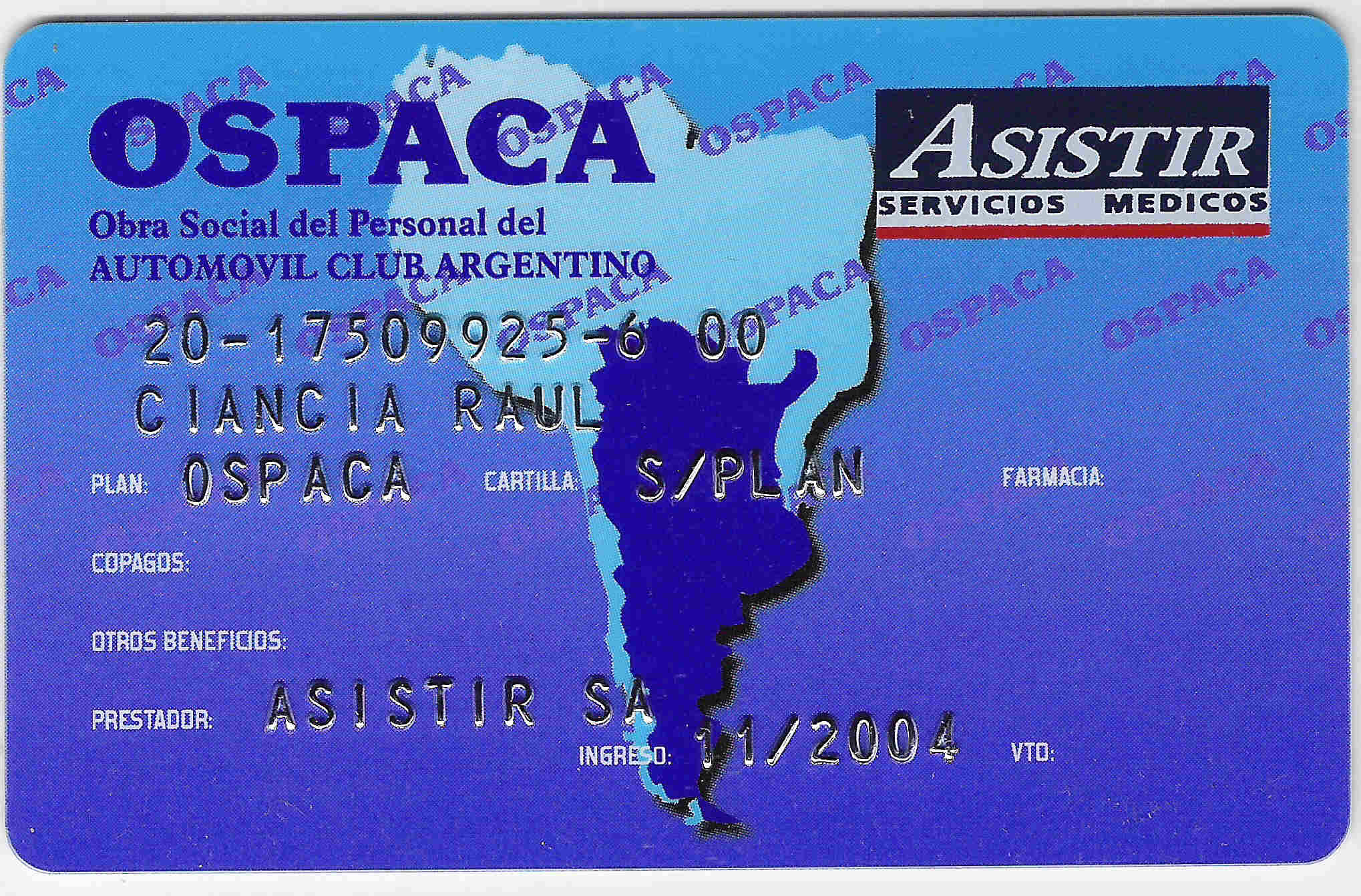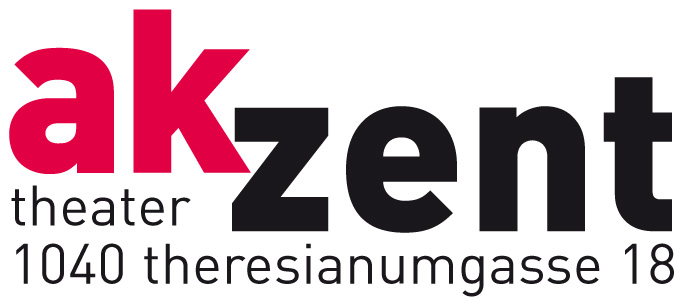BRAIN AND BEHAVIOR REVIEW PACKET PART II LECTURES 710
BIRDBRAIN TEACHER’S NOTES © ADT 2004 COMPILED BYQUICK STUDY GUIDE 11 BRAINSTORMING & MIND MAPPING
11TH ANNUAL MEETING OF THE ORGANIZATION FOR HUMAN BRAIN
157 THE DEMISE OF “BRAIN DEATH” IN BRITAIN DAVID
26 BRAINY KLASA 5 KRYTERIA OCENIANIA KRYTERIA OCENIANIA PROPONOWANE
26 EVOLUTIONARY CONNECTIONISM AND MINDBRAIN MODULARITY RAFFAELE CALABRETTA
Brain and Behavior Review Packet
Brain and Behavior Review Packet
Part II: Lectures 7-10
v.2002
Lecture 7: Memory Systems and Dementia
Broad memory categories-
1) long term (huge capacity, stores experiences, facts, skills over lifetime)
2) working memory a.k.a. short-term memory, an outdated term…
(limited capacity – can hold 7 “items”- lasts only 30 seconds unless rehearsed)
Long-term memory is subdivided into: declarative (=episodic + semantic) and procedural
declarative= knowledge of episodes/facts that can be consciously related, i.e. “knowing that”
- episodic= info with temporal or spatial context (what you had for breakfast this morning)
(this also includes remembering a word list a few minutes after reading it)
- semantic= general knowledge (cats have 4 legs, Washington DC is the capitol),
over time, episodic memories probably transform into semantic knowledge (or disappear)
procedural = unconscious “knowing how” to do something. Can be a motor, perceptual, or cognitive skill.
Note- popular conception of “short-term memory” – like what you use as you cram for this test, actually relates most closely to episodic memory (a type of long-term memory) – so remember, as far as this class is concerned- “short-term” = really short i.e. working memory - lasts 30 secs
Medial temporal lobe (hippocampus etc) and parts of diencephalon = responsible for making, then storing episodic memories. Actual storage occurs in cortex, but the hippocampus helps bind pieces of memories together as an event.
Patients with medial temporal damage have “anterograde” amnesia. They can’t acquire NEW episodic memories, because they’ve lost the apparatus that consolidates them or binds them together as an event. But they can retrieve OLDER memories, if they’ve already been transformed as semantic memory. Key characteristic= temporal gradient- more recent memories are hardest for them to retrieve. NOTE: this patient has OK working memory (30 seconds worth) and procedural memory- they can learn to ride a bike, although they won’t remember that you taught them to ride a bike.
The prefrontal cortex is the central executive system which manipulates new and old memories (to help make decisions etc). This is involves the working memory- which can briefly hold “items”-which are compared/manipulated etc. If you damage it, you can still store new memories, but you can’t remember when you learned different items (temporal presentation), where you learned them from, or how well you know them (a “metamemory” judgment).
Neocortical association areas store semantic memories in a distributed fashion – especially in the lateral temporal lobes. Semantic categories may be selectively impaired- for instance a patient that has trouble naming inanimate objects. This may be because semantic memory is associated with multiple sensorimotor modalities- and different categories of memories may engage a slightly different distribution of the cortex. Just remember, the concept of “cat” is spread all over your brain- you don’t have one localized group of cells that solely handles the “cat” idea.
The basal ganglia (and neocortical connections) are responsible for procedural memory. If you screw up cortico-striatal projections- patients will have a hard time learning new skills- e.g. both Huntington’s and Parkinson’s patients have trouble learning new procedures (both motor and cognitive).
Key Amnesic Syndromes:
Medial temporal lobe damage due to: hypoxic ischemia, vascular accident, Korsakoff’s syndrome
bad anterograde amnesia (impaired creation of new episodic memories)
temporally-graded retrodgrade amnesia
- OK semantic, OK procedural
Frontal lobe amnesia – mild anterograde amnesia (with screwed up retrieval, temporal judgements, source judgements, metamemory judgements).
- OK semantic, OK procedural
Alzheimer’s Disease – progressive dementia with cortical atrophy/neuronal loss (especially medial temporal lobe and association cortex). Histo: “plaques and tangles”. ACh/NE problems.
severe anterograde amnesia (impaired creation of new episodic memories),
impaired semantic, ok procedural
Huntington’s Disease – involuntary choreiform movements, progressive dementia,
neostriatal atrophy
have the “frontal lobe amnesia” problems (see above), moderate flat retrograde (as opposed to the medial temporal lobe amnesia
- OK semantic, impaired procedural
Lecture 8: Affect and Mood What's the difference? You can observe a patient's affect (the manifestations of emotion), but only they can describe their mood (subjective experience of emotion)
- maintenance of normal mood state (euthymia) depends on function of cortical-limbic and
cortical-striatal pathways
- the limbic system and related structures were anatomically/functionally grouped by Mayberg:
"dorsal compartment" = dorsolateral prefrontal CTX, dorsal anterior cingulate,
inferior parietal cortex, and striatum - assoc with attention, cognition, psychomotor
"ventral compartment" = hypothalamus (HPA, HPT axes), insula, subgenual cingulate,
hippocampus, and brain stem - assoc with vegetative, autonomic, somatic functions
"rostral compartment" = rostral anterior cingulate
assoc with. subjective experience of mood states and helps in dorsal/ventral interactions
"indeterminate compartment" = the amygdala – assoc. with fear and anxiety
- Sadness and depression may be associated with decreases in dorsal limbic and neocortical
activity and increases in ventral limbic activity (the 3 d's - depression= decreased dorsal)
Try to reverse these patterns to treat depression.
Neurotransmitters in Depression
- neurotransmitter action: binding transduction/activation amplification response
- depression is most strongly associated with deficits in serotonin and norepinephrine
- also relevant = decreased dopamine (cocaine and amphet have the opposite effect)
- changes in ACh and GABA levels have been demonstrated- relevance is not clear
- also altered in depression: neuroendocrine systems (e.g. hypothalamic-pituitary axis – HPA)
CRF from hypothalamus ACTH from pituitary glucocorticoids from adrenal cortex
- studies show HPA overactivity in depression - lack of feedback inhibition of CRF?
- hypothalamic-pituitary-thyroid (HPT) axis – may also be overactive in depression
TRH from hypothalamus thyrotropin (TSH) from pituitary T3 and T4 from thyroid
- other neuropeptides in depression - growth hormone, abnormalities in responsiveness to
gonadotropins/estrogens, abnormalities in vasopressin, oxytocin, endorphins, substance P
- NOTE: antidepressant drugs typically take a while to work- this suggests that they may
modulate receptor function, protein expression, 2nd messenger systems etc.
- susceptibility to stressors such as personal loss and self-esteem can lead to depression (duh)
- family studies show strong genetic pattern – complicated, probably involves multiple genes
Lecture 9: Control of Feeding Behavior
- feeding behavior is controlled by body weight (weight = relatively stable during life)
- there is a body weight set-point that animals will work to achieve by eating or not eating
- the hypothalamus is very important for this 'set-point' and feeding regulation
lesion ventromedial nucleus (VMH) hyperphagia/obesity = ventromedial hypothalamic syndr.
lesion lateral hypothalamus starvation/dehydration = lateral hypothalamic syndrome
mnemonic- vMh lesion = they eat More Lateral lesion = they eat Less
- the above lesions alter a rat's weight set-point- for example, a rat that is first force-fed and then
receives a VMH lesion will stop eating until its weight drops to its new set-point (which will be
heavier than its original weight because it now has a VMH lesion)- then hyperphagia will
resume -- reverse is true for a starved rat with a lateral lesion.
I'm sure the ASPCA would LOVE this stuff.
- the hypothalamus compares the ideal "set-point" to neural signals which reflect current body
weight (or fat mass). Feeding is adjusted accordingly.
The Lipostatic Hypothesis - some humoral signal is sent to inform brain of body's fat mass
- what is this signal? insulin? Leptin!! (lots of receptors for it in hypothalamus)
- mice without the leptin (OB) protein are obese- the brain never gets the "too much fat" signal.
if you inject their ventricles with leptin- they lose weight
- in humans, circulating leptin concentration is proportional to body weight
- leptin acts by inhibiting the effects of neuropeptide Y (NPY- normally induces feeding)
NPY receptors are all over- including lateral hypothalamic area
- melanocyte stimulating hormone (MSH) may also be involved in leptin action
3 ways leptin function may be impaired (in obese people?) : 1) ob gene doesn't produce
normal leptin 2) leptin isn't transported into CNS 3) leptin receptor is abnormal
- orexin (hypocretin)- like NPY, it induces feeding. Also associated with narcolepsy.
- CCK- like leptin, inhibits feeding. maybe influenced by leptin levels.
- leptin = long-term control. what mediates short-term control of feeding? glucose etc.?
- IV infusion of glucose inhibits feeding.
- IV 2-DG (glucose analog) enhances feeding by interfering with glucose access to cells
- IV gold thioglucose destroys VMH (probably because there are glucose receptors here)
- putting food in mouth causes blood glucose to rise- anticipatory negative feedback?
glucostatic hypothesis : brain keeps glucose within normal limits by adjusting feeding
- in actuality, this mechanism is probably not very important in everyday situations-
- glucose levels change a lot without really altering feeding
other factors affecting short-term feeding behavior
- dilation of esophagus, stomach, bowel - inhibits feeding
- CCK secretion may activate vagus nerve and induce satiety
- reward centers (example- nucleus accumbens)– reinforce beneficial behavior
e.g. foraging behavior (but not eating) is reduced by damage here
- hedonic factors- taste and smell are initially reinforcing (good)- but once you're full they
become negative factors
also note: animals with either hypothalamic lesion are very picky eaters
anorexia nervosa- less than 85% body weight; two types- restricting type (doesn’t eat) or bingeing/purging type; physical sequellae can include amenorrhea, muscle wasting, electrolyte imbalances, lanugo, osteoporosis and death
bulimia nervosa- underweight, normal weight, or overweight; engages in binging followed by compensatory mechanisms; Purging type – uses laxatives, diuretics, enemas, Non-Purging Type- compensates by fasting or excessive exercise
theoretic neurochemical etiologies:
-Neuropeptide Y (NPY): underweight anorexics have levels NPY (doesn’t actually make them eat, but may relate to obsessive interest in food intake)
-vasopressin and oxytocin: sometimes abnormally high vasopressin and low oxytocin may contribute to the cognitive distortions and preoccupation with food
-CCK: basal and postprandial CCK in underweight anorexics
-leptin: decreased leptin in underweight anorexics, but when they regain weight, leptin levels normalize BEFORE weight does makes it hard to regain weight
-5HT: low in starving anorexics- treatment with SRIs help with reducing symptoms, depression, anxiety and OCD; HIGH in recovered anorexics- maybe having too high basal 5HT levels predisposes to increase in rigid behavior?
treatments: cognitive behavioral therapy, SRIs, hospitalization with monitored feedings; nasogastric feeding if necessary; relapse common
Lecture 10 : Nicotine Dependence/ Substance Abuse
The Reward Pathway – designed to positively reinforce beneficial behaviors
key structures = ventral tegmental area (VTA), nucleus accumbens, prefrontal cortex
the VTA sends out dopaminergic (DA) projections to the other two areas
stimulation of the nucleus accumbens (by an electrode which stimulates DA release) is pleasurable (positive reinforcement is blocked by DA antagonist)
addictive behavior and craving is closely associated with this pathway
Cocaine etc. – addictiveness: crack >> cocaine, because crack (smoked) gets to the brain faster - - abuse potential = directly related to route of administration & how quickly drug hits brain
cocaine binds to reward areas (described above), prevents DA reuptake increases activation of the reward pathway
most addictive drugs directly or indirectly activate reward pathway
Nicotine – within the brain, it mostly activates beta-2 subunits of nicotinic ACh receptors
key brain nAChR subunits = alpha-4, beta-2, and alpha-7 (especially in hippocampus)
both beta-2 and alpha-7 receptors are key for nicotine dependence (genetic variability?)
Why do you really want that cigarette in the morning? Because your nAChRs get upregulated during periods of low nicotine (while you sleep) – so you get a big kick- i.e. lots of receptor activation- from that first cigarette. Check out the nicotine cycle chart in the notes.
As the day goes on, nAChRs get desensitized because of all that nicotine- and you need more and more cigarettes to get the same kick. – same idea over lifetime of smoking (you’re always chasing after that first ‘kick’ you got when you were still super-sensitive to nicotine)
smokers perform “nicotine regulation”- that is, regardless of how much nicotine is in the cigarette or how much it is filtered, smokers will inhale more, block filter holes, etc. in order to maintain concentration of blood nicotine levels within “therapeutic window”
CNS nicotine effects - stimulates arousal, attention, short-term memory, reduced stress/pain
Peripheral nicotine effects - HR , BP, metabolic rate and lipolysis (Virginia slims)
Skeletal muscle relaxation, adrenal steroid release
Other effects - nicotine reduces MAO B and A activity, therefore decreased DA breakdown
Depressed individuals have higher rates of smoking- are they self-medicating?
Nicotine crosses the placenta developmental problems?
Nicotine metabolism etc.
Has a short t½ in the brain- so cigarettes are smoked for continuous, rapid dosing
Metabolized by liver (p450 system) – t½ in body = 1-4hrs
Tolerance : smokers need more and more nicotine to capture desired effect
Withdrawal : a key feature of “physical dependence” – includes craving, irritability etc.
Nicotine replacement therapies (NRTs)
NRTs- deliver a slower spike of nicotine than cigarettes – abuse potentials vary
- Nicoderm patch: steady, low level nicotine throughout day (doesn’t fully replace “spikes”)
side effects- weird dreams
Nicotine gum and inhaler = advantageous because patient can take nicotine as needed – may be more satisfying (with more adherence)
Nicotine gum- higher dose works best, especially when combined with behavioral treatment.
- Nicotine nasal spray – fastest nicotine spike among NRTs – therefore higher chance of abuse!
Use as second-line tool after gum and patch
Nicotine inhaler – besides providing nicotine, helps with oral habit aspects of addiction
Other therapeutic drugs
buproprion SR (Zyban) – reduces craving, very effective in combo with the patch
Clonidine (norepinephrine alpha-2 antagonist) – blocks some locus ceruleus stimulation and appears to reduce craving. Also is an antihypertensive med. Not a first-line agent, but useful in reducing withdrawal symptoms.
Do NRTs work better than quitting cold turkey? YES! 60-70% better quit rates.
If an individual can’t use NRTs or other meds, behavioral therapy can help. It may also be useful in combination with NRTs. Requires smoking “diary”- try to reduce cigarettes by certain percentage over several weeks = “nicotine fading”.
902 BRAIN LAB JJ DICARLO MATLAB PROJECT 0 INTRODUCTION
A BRAIN TREAT FOR THE HOLIDAYS BY DR LINDA
ACTIVITIES THAT MAKE TRAINING INTERACTIVE BRAINSTORMING – FREEWHEELING TECHNIQUE
Tags: behavior review, addictive behavior, review, behavior, lectures, brain, packet
- AUTHORSHIP STATEMENT (FILL OUT THE SHADED FIELDS IN PRINT)
- P ROGRAMA LA SOLIDARIDAD TAREA DE TODAS Y TODOS
- FIA 0111 EXPERIENCIA PRÁCTICA 2 A ELEMENTOS DE
- LA ENSEÑANZA SOCIAL EN EXACTAS LA UNIVERSIDAD DE BUENOS
- KOMMUNLOGGA LOKAL INFORMATION OM AVFALL I XXKOMMUN SOM KOMPLEMENT
- PDF13 ¿÷¢Þ 1 0 OBJ PAGES 2 0
- F ORMATO PARA DICTAMEN DE LIBRO O CAPÍTULOS DE
- VMO 11 REPUBLIKA HRVATSKA SISAČKOMOSLAVAČKA ŽUPANIJA OPĆINA LEKENIK
- FORMATO EVALUACION DEL DESEMPEÑO PARA PRIMA TÉCNICA NIVEL ASESOR
- tol-doc-comsoc-0245-21
- DETERMINAZIONE N 210 DEL 25032009 DIREZIONE GIURIDICA ED ECONOMICA
- GIGA PREJUDICE IN KENYA ETHICS OF DEVELOPMENT IN A
- IMIĘ NAZWISKO …………………………… ROK KIERUNEK STUDIÓW …………………………… NR ALBUMU
- 19 THE ASSESSMENT OF THE LIKELIHOOD OF COORDINATED CONDUCT
- 7 LOKALNE VOLITVE INSTRUKTIVNI OBRAZEC LV10 ZAPISNIK VEČINSKE
- COL·LEGI FRA JOAN BALLESTER DIMARTS 1 DIMECRES 2 DIJOUS
- APPLICATION FOR A TEMPORARY TRAFFIC REGULATION ORDER NOTICE FOR
- STRIVE INTERCLUB PROG D 19122013 WA ATHLETICS STADIUM
- THE FIRST GENERAL FRATERNITY (KAPPA ALPHA SOCIETY) WAS ORGANIZED
- AANWEZIG MW H VAN VLIET (GL) MW J RUITENBERG
- FORMULARIO RG – OR 03 LISTADO DE INSPECTORES ORGÁNICOS
- DISCLOSURE DIRECTION TO POLICE (ANNEX H) 2013 PROTOCOL AND
- GOOD MORNING HONORABLE JUDGES LADIES AND GENTLEMEN MY NAME
- ULTIMA REFORMA PUBLICADA EN EL PERIODICO OFICIAL 13 DE
- NA PODLAGI 41 ČLENA ZAKONA LOKALNIH VOLITVAH (URADNI LIST
- UNAMI UNOFFICIAL TRANSLATION KURDISTAN NATIONAL ASSEMBLY ELECTIONS LAW –
- UNIVERSIDADE REGIONAL DE BLUMENAU CENTRO DE CIÊNCIAS EXATAS
- ALCOHOL SCREENING TOOL THESE TEN QUESTIONS ARE TAKEN
- EL ULISES DE JAMES JOYCE CUENTA EL PERIPLO DEL
- BIOGRAPHICAL SKETCH 1 CURRICULUM VITAE OF HENRY GORDON BERRY
ÐÏÀ¡±ÁÞŸ ¯ ² ÞŸŸŸX9B X9C X9D X9E X9F
ROSENBERG SELFESTEEM SCALE (ROSENBERG 1965) THE SCALE IS A
 ANDREI BELYI PHD CANDIDATE THESIS DIRECTOR PROF E REMACLE
ANDREI BELYI PHD CANDIDATE THESIS DIRECTOR PROF E REMACLEMODELO ORIENTATIVO DE ACEPTACIÓN DE AYUDA O FORMULACIÓN DE
LICEA 1 LICEUM OGÓLNOKSZTAŁCĄCE IMIENIA ŚWIĘTEJ JADWIGI KRÓLOWEJ W
JUEVES 24 DE MARZO DE 2016 DIARIO OFICIAL (PRIMERA
 Wwwmonografiascom Sistema de Arranque 1 Magnetismo 2 Electromagnetismo 3
Wwwmonografiascom Sistema de Arranque 1 Magnetismo 2 Electromagnetismo 3 NORMAS DE TRABAJO MEDIANTE LA PRESENTE INFORMAMOS A UDS
NORMAS DE TRABAJO MEDIANTE LA PRESENTE INFORMAMOS A UDS ZAŁĄCZNIK NR 1 DO ZAPROSZENIA DO SKŁADANIA OFERT SZKOLENIOWYCH
ZAŁĄCZNIK NR 1 DO ZAPROSZENIA DO SKŁADANIA OFERT SZKOLENIOWYCHAUDIÈNCIA PÚBLICA DE BARCELONA DISTRICTE HORTAGUINARDÓ DIA 22 DE
 NOTA DE PRENSA INNOVA OCULAR CLÍNICA VILA PATROCINA POR
NOTA DE PRENSA INNOVA OCULAR CLÍNICA VILA PATROCINA PORPATVIRTINTA KLAIPĖDOS RAJONO SAVIVALDYBĖS ADMINISTRACIJOS DIREKTORIAUS 2011 M BIRŽELIO
LA LUNA CUENTA LA HISTORIA QUE EN AQUEL PASADO
 MEDIENINFORMATION TOPSY KÜPPERS BRINGT NOCH EINMAL MIT GEFÜHL! ZUM
MEDIENINFORMATION TOPSY KÜPPERS BRINGT NOCH EINMAL MIT GEFÜHL! ZUMTÓM TẮT ĐỀ CƯƠNG HỌC PHẦN CN02601 DINH DƯỠNG
GTBTNCHL515 2 NOTIFICACIÓN SE DA TRASLADO DE
RIFA PROMOCION “GP MONTMELÓ” REPSOL COMERCIAL DE PRODUCTOS PETROLÍFEROS
RAE ORTOGRAFÍA DE LA LENGUA ESPAÑOLA ED ESPASA MADRID
 16 PER PETTERSON KONJE KRAST LITERARNO DELO ZA ESEJ
16 PER PETTERSON KONJE KRAST LITERARNO DELO ZA ESEJ GTBTNSGP23 0 NOTIFICATION THE FOLLOWING NOTIFICATION IS
GTBTNSGP23 0 NOTIFICATION THE FOLLOWING NOTIFICATION IS